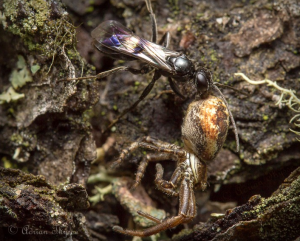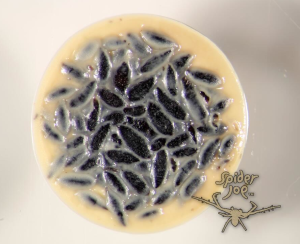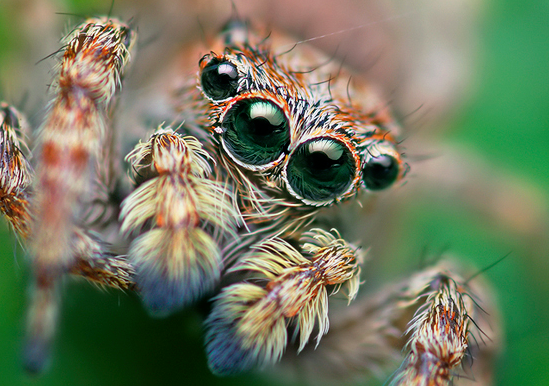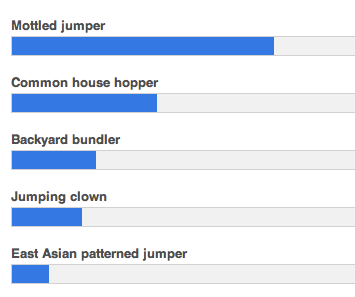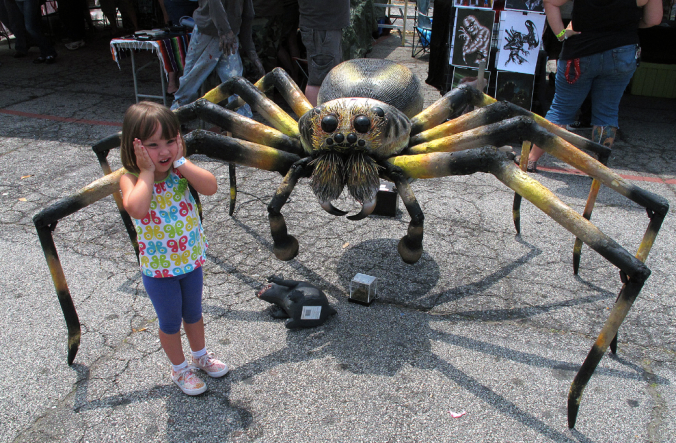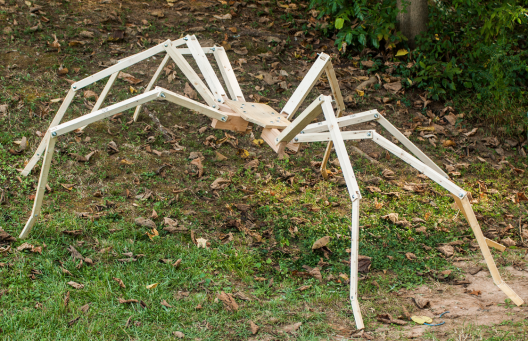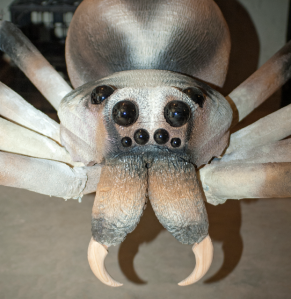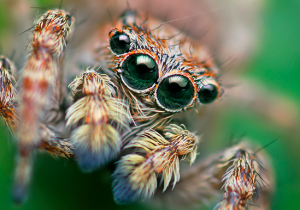From the world of arachnology, entomology and beyond… Expiscor is here for you! Here are some things I stumbled across this week:
- Find your inner bug dork: The amazing, inspiring Bug Chicks: they are going to take a couch across America, filming and talking about insects. Check out their awesome video here, and you can give them money here. Do it. Just do it.
- Need a jumping spider fix? Here’s an oldie but a goodie - jumpers wearing water droplet hats.
- Top fears of teenagers. #1 - Terrorist attack. #2 - spiders. Unbelievable!
- Mirror mirror on the wall… Nicky Bay with photos of a spider turning its abdomen into a multifaceted mirror.
- Do you like Dock Spiders? Hey, that genus is found in Madagascar, too [PDF]
- Photo time! Another stunning shot from Adrian Thysse - this one of a crab spiders as prey. You can follow his blog here (and thanks to Adrian for allowing me to reproduce the shot, here)
- A terrifying ball of flies. What?? Too bad about the title, but the story is awesome.
- Six Second Insects: a great use of the Vine app, from Morgan Jackson.
- In case you missed it, pubic lice suck.
- Macrophotography of ant warfare - io9 features Alex Wild!
- A Catan-style board game with ants. FUN! (thanks Alex Wild)
- and even more from Alex Wild - an ant that is 30 million years too early.
- Here’s a paper based on a reexamination of weevils collected by Thunberg the late 1700s - and a new genus was described. Don’t forget about the value of museums!
- Mosquito season: here’s a must-read article by Cameron Webb - busting myths of mosquito repellents.
- Want to learn more about German cockroaches? Why yes, I would!
- Spider poop. Spider Joe posted an amazing photo of the stuff (see below); the solids are undigested prey material and the liquid is a slurry of guanine crystals. Wow. (um, and as Joe stated on twitter, Oreo cookie, anyone?)
- Bird poop. I had some land on me earlier this week. Apparently that should only happen once every 195 years. (I take that as good luck). Thanks Lab & Field for the link!
- Having trouble figuring out authorship for a paper? Why not determine it by croquet? (thanks Karen James, for that tweet!)
- Dinosaur Train: A review of a kids book in a scientific journal. A fine idea! (and a good review, good work Canadian Field Naturalist)
- Tweet of the week goes to my (young) colleague Dr. Dez:
- Changing families behind the decline of field stations? Terry McGlynn has a good point…
- First Impressions: a great piece of nature writing from Kim Moynahan.
- Editors and authors of this Journal of Animal Ecology paper should be ashamed: “Who wears the pants” in the title of this paper.
- The greening of Canadian Campuses. Hey, my campus is featured!
- For Academics: The awesomest 7-year post-doc.
- Alcohol-free whisky. Seriously, this doesn’t sound like a very good idea.
- And finally, a Happy Birthday (today!) to my big sister. She’s awesome (and she writes books!)
- For nature geeks everywhere… True facts about owls. I love this:
